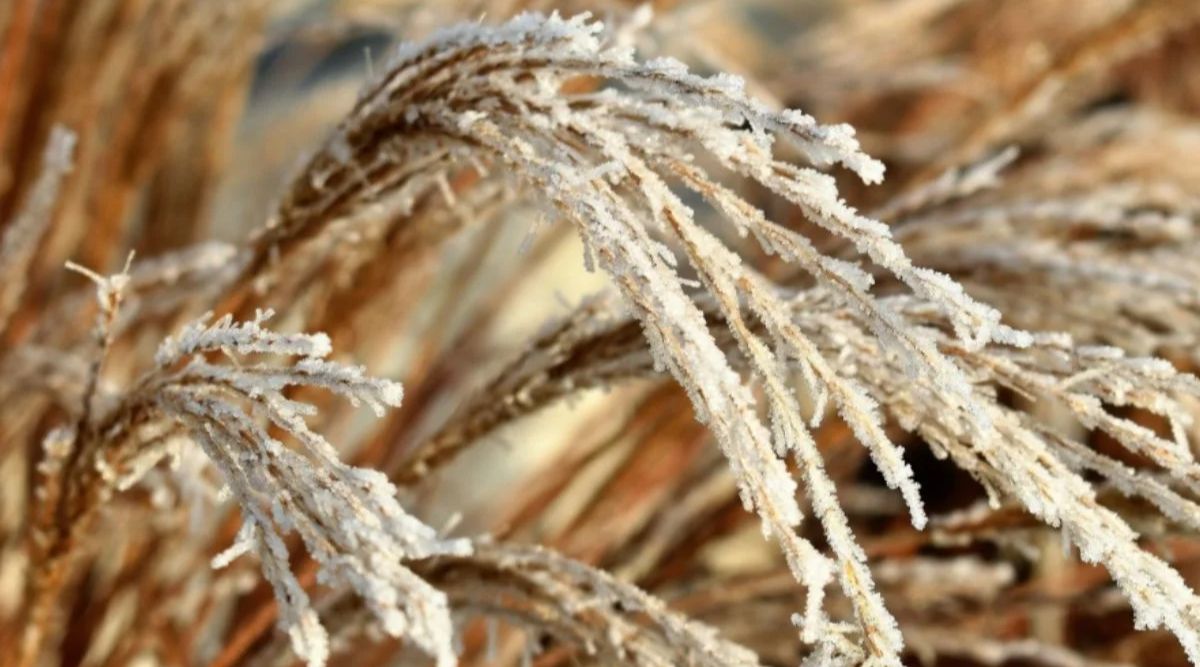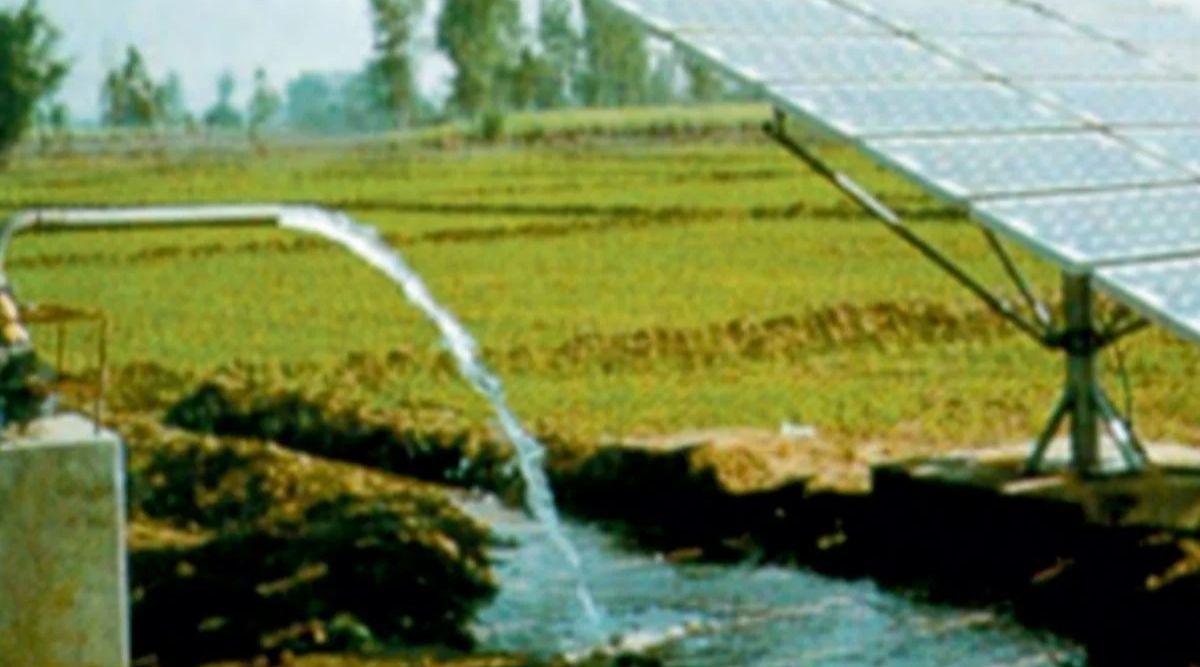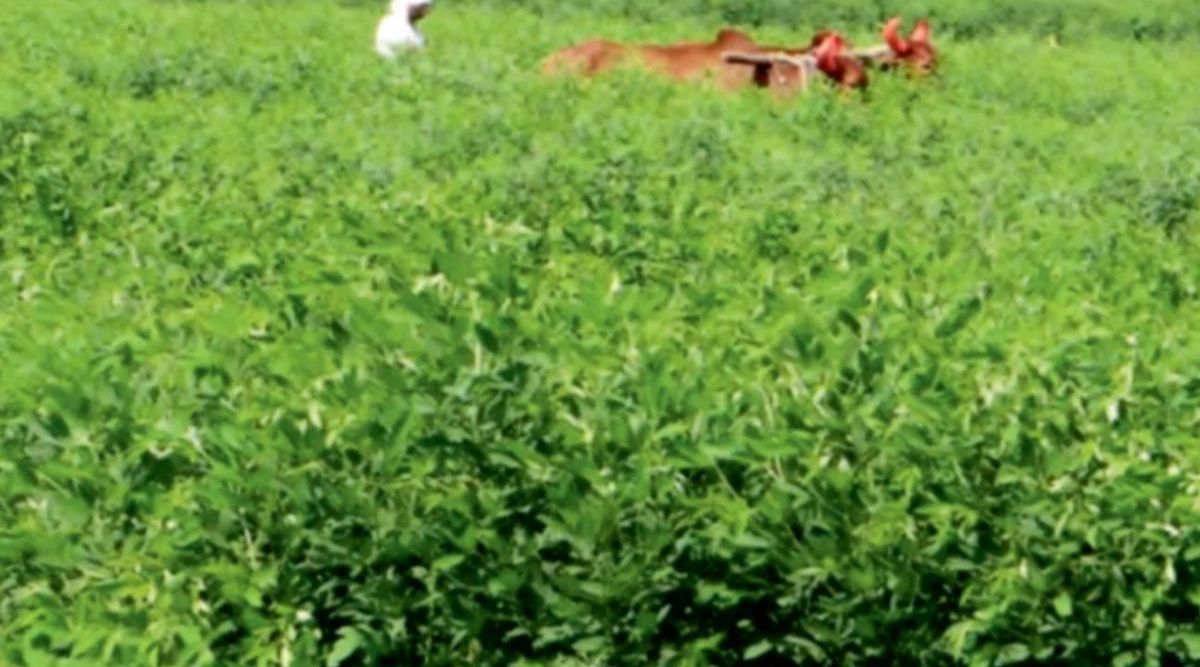Frost Management: Dangerous for crops but rescuable
Frost may be a seasonal outbreak, but its effect is no less than that of a terrible disease.
During the cold days of winter, farmers have to face such a natural disaster in the form of frost, which is especially difficult to prevent. Frost on crops is very dangerous. Actually, frost occurs when the temperature of the atmosphere reaches zero degree Celsius while being less than 4 degree Celsius. But if the advice of agricultural scientists is implemented at the right time and properly, then the outbreak of frost can be prevented from becoming an incurable problem.
By the way, it is not a disease but only a natural condition and seasonal attack. But the effect of frost on the production of crops, vegetables, flowers and fruits is not less than any serious disease. Frost damages 80 to 90 percent of rabi vegetables and fruit plants like papaya and banana, 60 to 70 percent of pulse crops and 10 to 15 percent of cereal crops like wheat and barley.
Scientific explanation of frost
Water starts freezing at a temperature of 4 degree celsius and with the help of its uppermost molecules, it prepares such a heat-insulating shield so that its inner molecules can maintain their liquid form. The further the temperature drops below 4 °C, the more the outer water molecules continue to harden themselves. Because of this amazing quality of water, even when the lakes freeze, its aquatic creatures can survive. But because of their tiny size, the amount of molecules in tiny drops of dew is not large enough to make a heat-insulating shield for crops. That’s why it becomes an outbreak for crops.
Frostbite symptoms
To counter the frosty days, extreme preparation and vigilance is needed by farmers in areas of northern India where the night temperature drops to near zero degree celsius. In the peninsular areas of the south, farmers do not have to deal with frost because there the temperature does not fall to the extent of freezing dew drops. The frost prone season in northern India is usually from mid-December to mid-January.
During this time the sky remains clear, the wind is almost not blowing and the day or night temperature becomes very low. As much as the earth is heated by the heat of the sun during the day, all that heat is also transferred back from the earth to the atmosphere through radiation. That’s why the ground temperature drops below zero degree Celsius at night. In such a situation, the tiny drops of moisture or dew present in the atmosphere get converted into ice or snow particles. The dew that takes the form of snowflakes is called frost.

Effect of frost on crops
Due to frost, the water present inside and outside the plant cells starts shrinking and freezing. This causes the cells to burst. The phospholipids in the cell membranes become solid particles. This stops the flow across the membranes. Due to the death of cells, the attack of germs and germs on the plants is more. The tender shoots are destroyed by frost. Its maximum effect is on the leaves and flowers. Underripe fruits shrivel up and grains are not formed in leaves and ears. This reduces their load.
Frost causes complete destruction
The green colour of crops affected by frost ends and they start turning white. The leaves, flowers and fruits of plants all wither. Spots appear on the fruits and grains and the taste of the crops also deteriorates. In vegetables, its adverse effect is more on those plants which seem very close to the ground. Due to the outbreak of frost, the amount of amino acid hormone in plants increases greatly and their growth stops.
The activities of enzymes in plants are also affected due to low temperature. Due to this, the processes of photosynthesis i.e. making their food for nutrition, respiration and growth also slow down and eventually the plants either start dying or they have to struggle a lot to save their lives. This struggle of plants with frost also has a huge impact on their yield for which farmers plant or cultivate crops.
What is black and white frost?
The nature of frost is also of two types. Black frost is the condition when the air temperature near the ground becomes less than zero degree celsius without freezing of water. The moisture in the atmosphere becomes so low that the formation of dew stops. It prevents freezing of water. On the other hand, in the condition of white frost, the temperature in the atmosphere becomes less than zero degree Celsius and its moisture i.e. dew turns into ice or snow due to excessive coldness. The state of white frost is most harmful and fatal for crops or farming. That’s why if the period of days of outbreak of frost lasts for a long time, then the plants of the standing crop also die.
How to protect crop from frost?
To save the crop from frost, it becomes necessary to maintain the temperature of the atmosphere above zero degree Celsius by any means. For this many traditional, modern and chemical methods should be adopted. These methods are easy to use and much less expensive than frost damage.
1. Irrigation of fields
Whenever there is a possibility of frost or there is a warning of frost from the Meteorological Department, light irrigation should be given to the crop. Due to this, the temperature will not fall below zero degree Celsius and the crops can be saved from the outbreak of frost. Regarding the fields irrigated by sprinkler method, special care should be taken that the sprinkler should be run continuously till sunrise, otherwise if the sprinkler is switched off till 4 in the morning, the dew drops on the crop will become frozen before sunrise. This causes more harm than benefit.

2. Plant cover
The tender plants in the nursery suffer the most from frost, so it is advisable to cover them with a plastic sheet at night, as the temperature inside the plastic rises by 2-3 °C. Due to this, the dew drops do not reach the freezing point and the plants are saved from frost. Plants can be saved from frost even by putting a shed on the nursery.
The plastic wrap technology is a bit expensive. That is why it is difficult to use it in large farms. Plants can also be covered with straw thatch. But while covering, keep in mind that the south-eastern part of the plants should remain open, so that there is no shortage of sunlight in the morning and afternoon. Use straw from December to February. Remove it as soon as March comes.
3. By smoking near the field
Many things like straw, cow dung, plant roots, millet straw are left in the fields and barns in the villages as waste material of agricultural produce. Whenever there is a possibility of frost, burn these wastes in the night and create smoke. This smoke protects the ground heat which is lost by radiation. In this way the temperature does not fall to the freezing point and protection from frost is provided.
4. Prevention of cold wave by airtightness
It is also beneficial to put a fence of trees and bushes on the bunds around the field to prevent frost. Due to this, the flow of cold wave wind decreases. The higher the height of the hedge of trees and shrubs, the greater the protection against the cold wave. If it is not possible to erect a hedge of trees and bushes around the field, then at least it should be tried in the north-west direction, because this is the direction of the cold wave. Up to a distance of four times the height of the tree from where the cold wave is coming and up to 25-30 times the height of the tree where the wind of the cold wave is going, if the field can be fenced according to this, then the crop is safe from frost.
5. Growing frost resistant crops
In areas where there is a high possibility of frost, sowing crops like beetroot, carrot, wheat, radish, barley etc. will reduce the effect of frost. Sowing of resistant varieties of frost-affected crops also helps a lot. For example, sowing of Kufri Sheetman, Sindoori and Kufri Deva of potato, BL-1, BL-3 of peas etc. protects against damage caused by frost.
6. Mixing sand in the field
Mixing sand in the fields at an interval of a few years can also protect the crop from frost, because the surface of sandy soil heats up quickly in the sun and its heat also remains for a long period. Because of this quality, sand proves helpful in fighting frost to some extent.
7. From the heater
The effect of frost can also be reduced by installing heaters between two rows of vegetable or fruit plants or around the ridges. The heat of the heater increases the temperature around the soil and the plants and its heat creates a wall of smoke on the upper surface of the soil which retains the heat of the soil for a long time. But this method can also prove to be very expensive and impractical because it can be difficult to have enough electricity available at the right time.
8. Timely sowing
The best way to protect crops from frost is to manipulate crop operations. Most of the crops get frost at the stage of flowering. Therefore, early sowing of crops in the affected areas proves to be very useful. Fruit trees and crops near ponds and water bodies are also less affected by frost.

9. Combating Frost Chemically
When there is a possibility of frost in rainfed crops, spray 0.1 percent commercial sulfuric acid (10 millilitre chemical in 100 litres of water) on the crop in such a way that the plants get completely wet. Fighting ability also increases and crops ripen relatively early. Wheat, gram, mustard, potato and peas etc. can also be protected from frost by spraying sulfuric acid. The temperature of the atmosphere rises and frost is protected.
10. Perfusion of dimethyl sulfo-oxide (DMSO)
Di methyl sulfo-oxide (DMSO) increases the water uptake capacity of plants. Due to this, the water present in their cells does not freeze, their walls do not burst and the plant does not dry up. This chemical should be sprayed at the rate of 75-100 grams per hectare by dissolving it in 800-1000 liters of water when there is a possibility of frost. If required, another spray of DMSO can be done after 10-15 days of first spray.
11. Glucose Spray
Spraying of glucose on the crop increases the amount of soluble substances in the plant cells. Due to this, there is no adverse effect on the normal functioning of the cells even when the temperature drops and the crop is saved from the outbreak of frost. Generally, at the rate of one kilogram of glucose per hectare mixed with 800-1000 liters of water, spraying should be done at the stage of flowering. If needed, the same solution can be sprayed again after 10-15 days.
12. Spraying with Psychosil
Spraying of Psychosil stops the growth of plants. But the effect of frost on crops can be reduced. For this, 0.03 percent psycosil chemical should be sprayed at the stage of flowering in crops and vegetables.
Contact us: If farmers want to share information or experiences related to farming with us, then they can do this by calling us on the phone number 9599273766 or by writing an email to [email protected] or by sending your recording. Through Kisan of India, we will convey your message to the people, because we believe that if the farmers are advanced then the country is happy.



